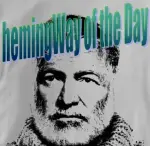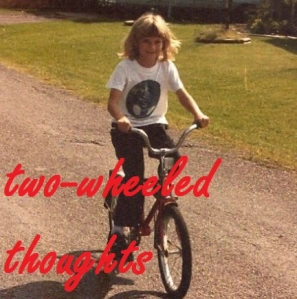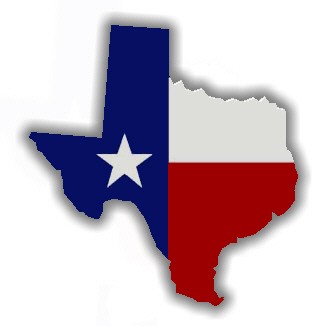Recommended by the fabulously talented Jessie van Eerden. Writing my thesis with her this semester is a dream.
 However, first thoughts on this movie were “wow, this is weird, why am I watching this?” and then I got into the groove. For one thing, it’s an interesting work of narrative nonfiction. Ostensibly, director Agnès Varda is concerned with an external subject: the longstanding tradition of gleaning, or collecting the leftovers of a harvest. She enters this subject via art – the paintings of Millet and Breton – but among and in between this external material, Varda looks back at herself. The moments that become personal make the whole thing work, for me. Which is not to say that I wish the whole thing had been personal, or I spent the rest of the movie waiting to learn more about our narrator, you understand. I’m just voicing again my preference for a present narrator. I appreciate external material that is commented upon by a personal voice. In fact, I pretty much require it, as a personal preference. Perhaps this is on my mind now because I’m working on my thesis, that book-length project “of publishable quality”… and I am appreciating that Jessie shares my feeling of being an essayist, of commenting on outside material from a personal perspective, rather than simply airing all my own thoughts and feelings. Personal essay, not memoir, if you will.
However, first thoughts on this movie were “wow, this is weird, why am I watching this?” and then I got into the groove. For one thing, it’s an interesting work of narrative nonfiction. Ostensibly, director Agnès Varda is concerned with an external subject: the longstanding tradition of gleaning, or collecting the leftovers of a harvest. She enters this subject via art – the paintings of Millet and Breton – but among and in between this external material, Varda looks back at herself. The moments that become personal make the whole thing work, for me. Which is not to say that I wish the whole thing had been personal, or I spent the rest of the movie waiting to learn more about our narrator, you understand. I’m just voicing again my preference for a present narrator. I appreciate external material that is commented upon by a personal voice. In fact, I pretty much require it, as a personal preference. Perhaps this is on my mind now because I’m working on my thesis, that book-length project “of publishable quality”… and I am appreciating that Jessie shares my feeling of being an essayist, of commenting on outside material from a personal perspective, rather than simply airing all my own thoughts and feelings. Personal essay, not memoir, if you will.
And that is what I’m getting out of this movie: the narrative stance. As well as the subject matter: not gleaning in particular, but the entry through art into a larger subject (I am writing about the Drive-by Truckers, Jason Isbell, Guy Clark, and Dominique de Menil, among others), as well as its metaphoric possibility. I really lit up when Varda noted the new, metaphoric uses of ‘gleaning’:
On this type of gleaning, of images, impressions, there is no legislation, and gleaning is defined figuratively as a mental activity. To glean facts, acts and deeds, to glean information. And for forgetful me, it’s what I have gleaned that tells where I’ve been. From Japan, I brought back in my case souvenirs I had gleaned.
She does a lot of using one hand to film the other hand, which is an interesting statement about art, right? (All that commentary about the memoir as navel-gazing!)
The Gleaners and I is a piece of art, concerned in part with art – the original paintings as inspiration; the artists Varda meets who create out of the refuse they scavenge – as well as several meanings of gleaning. The people in the French countryside consider gleaning in its old sense, bending down to pick up leftover crops lying on the ground after a harvest. Some see a difference between this act and picking, which is picking fruit or nuts or whatever off of trees, vs. bending to take off the ground. Then there is urban scavenging, dumpster diving and combing through curb leavings. And finally that metaphoric sense, in which I watch this movie and take with me – figuratively – the parts that are of most value to me.
Varda interviews a “painter and retriever” who picks up other people’s discards from the curbs to make art, not unlike a dear friend of mine: he says, “what’s good about these objects is that they have a past, they’ve already had a life, and they’re still very much alive. All you have to do is give them a second chance.” (I also love that he points out that the city council puts out maps of where this not-junk is going to be, and Varda responds that really, aren’t the maps so that the people can put out their junk? And he sort of chuckles and says yes, well, I read the maps in my own way.)
I’m really fascinated though at the assumption throughout – never challenged! – that this food is all “wasted” if people don’t eat it. One guy did say about unharvested grapes that otherwise “the wild boars and the birds will get them.” So… how is that a waste? No human got it, but it didn’t go to waste. Even the fruit that rots on the ground contributes to a system. Even if we’re compelled to make it about us: dirt is necessary for people to live, for everything to live, and rotting grapes help make dirt. I wrote to my artist-scavenger friend about this movie, and he responded: “There is an edict in the Old Testament about leaving behind a percent of crops for the animals. Old wisdom makes sense sometimes.” This seemed like a gaping hole to me. After all, we didn’t invent grapes. They grew on their own, for their own purposes: the purpose of the grape, and the bird and the wild boar. Shades of Amy Leach here…
The film is in French, with subtitles, and it’s dated. (It was released in 2000, but the narrative voice is very much “what is this new millennium nonsense” – filmed in the 90s, of course.) It’s also arty, a little slow-paced and introspective, which could contribute to its being a little less than accessible – it worked that way for me, early on. It had a little bit of the tone of Sherman’s March, but not nearly so off-putting for this viewer!
All in all, I was a touch slow to get involved but Varda’s Gleaners ended up being fascinating, thought-provoking, and memorable. It’s been haunting my thoughts. There’s a lot going on here, and I do recommend it, if you’re at all interested in… trash, food, the end of the world, reuse, art, or narrative perspectives. So, good for all thinking souls.
Filed under: musings | Tagged: creative nonfiction, documentaries, Jessie van Eerden, movies, nonfiction, WVWC MFA reading list |







Lovely; not just here, but in conversations that follow-on from it.
E.g. (and of course) I appreciated your paragraph on food ‘waste’. And a conceptual suggestion, from a gardner/permaculture perspective: consider the difference one may make between DIRT (the physical, mineral ‘structure’) and SOIL (the organic, living matter that includes insects & bacteria.)
Many of us creating new gardens must start with essentially dirt, and then encourage soil development – by adding food ‘waste’ and other plant matter. This is actually just feeding the insects & bacteria that do the real work for us, of creating soil; no need to seek them – provide the banquet, and they will come. It’s a very important food chain!
David Montgomery has contributed popular creative non-fiction on the subject, with his ‘trilogy’ of “Dirt”, “The Hidden Half of Nature” and “Growing a Revolution”.
Arguably *the* most basic and important food chain, right? Because with no soil there is no life at all? Also water, another thing we perhaps don’t think enough about.
Your distinction between dirt and soil is new to me, in these definitions. Is that Montgomery’s?
Depends on who you ask! – not a dictionary difference, and generally sloppily interchanged, but you get that answer if you ask most any gardener; especially organic gardeners, permaculturists, and certainly David Montgomery. And using it is a very good way to explain & educate about those issues.
Yep. Good. I think I would have said they were interchangeable but with connotations. Soil is fancier than dirt.